Submachine guns "Port Said" and "Akaba" (Egypt)
Soon after the end of the Second World War, the countries of the anti-Hitler coalition handed over to the Egyptian army a large number of diverse material parts. This made it possible to cover part of the needs of the armed forces, but did not completely solve the actual problems. At the end of the forties, a plan was born to build our own defense industry, capable of at least partially fulfilling the army’s supply requirements and reducing import requirements. Early in the next decade, the first results of this kind in the field of small arms were obtained.
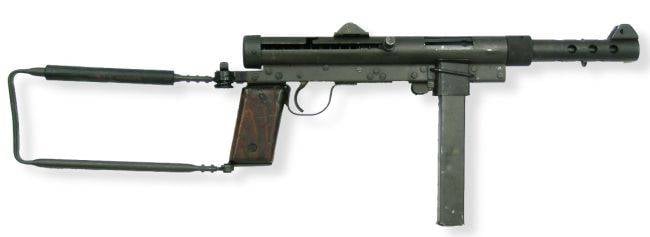
Submachine gun "Port Said" in combat configuration. Photo Modernfirearms.net
For obvious reasons, Egypt did not have its own design school in the field of small arms. For years, only samples of foreign development were in service. Given this, the army command decided to abandon the creation of its own weapons from scratch and start the production of foreign weapons under license. After examining the offers available on the international market, Egypt chose Sweden for cooperation.
In the early fifties, the Egyptian Defense Ministry and the Swedish company Carl Gustafs Stads Gevärsfaktori (now Bofors Carl Gustaf AB) signed several agreements defining conditions for mutually beneficial cooperation. For a fee, the Egyptian side received technical documentation for several samples of small arms of the Swedish development. The customer was entitled to a license for independent mass production of these systems. In addition, Egypt was to receive some used technological equipment necessary for the production of weapons.
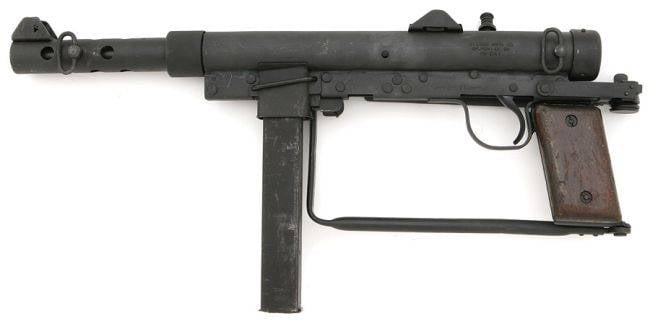
Product with folded butt. Photo Modernfirearms.net
Over the next few months, the acquired equipment was delivered to the Maadi Factories (now Maadi Company for Engineering Industries) new weapons factory. After completion of the commissioning, the plant was supposed to begin the serial production of two new types of small arms, previously developed by Swedish gunsmiths.
One of the two new products designed to rearm the Egyptian army was the Kulsprutepistol m / 45 submachine gun (abbreviated as Kpist m / 45) or Carl Gustaf m / 45. This weapon was developed in Sweden in the first half of the forties, and since 1945-th was in service with the Swedish army. The submachine gun had quite good characteristics, and also differed in simplicity of production and the small price. On the basis of various characteristics, the Egyptian military considered it most advantageous for licensed production and use.
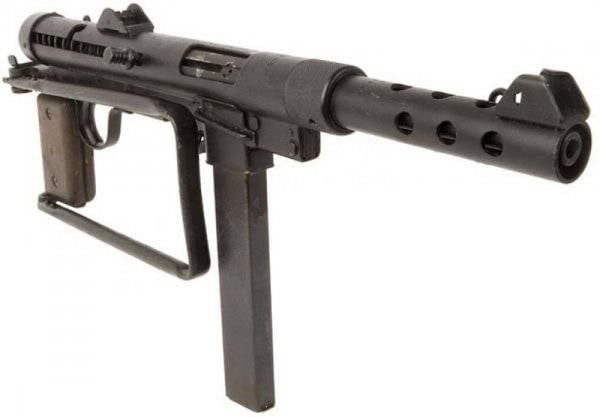
The barrel was equipped with a protective cover. Photo Armoury-online.ru
Launching mass production and taking licensed weapons into service, the Egyptian army did not keep its original name, but proposed a new name. Egyptian-made Kpist m / 45 was given the name Port Said. The weapon was named after a small town at the northern end of the Suez Canal. It is curious that a few years later, during the Suez War, the city of Port Said became the site of a major battle, during which Egyptian soldiers actively used the weapon of the same name.
The Swedish submachine gun “Karl-Gustav” m / 45 was not very complex, and therefore the Egyptian factory “Maadi” did not redo it or update it. The serial “Port Said” differed from the basic Kpist m / 45 only with its stamps and, in some cases, with a different quality of performance of individual parts. In terms of design, performance and operation, both samples were the same.
Like the Swedish prototype, the Egyptian submachine gun was an automatic weapon for the Parabellum 9x19 mm pistol cartridge, built according to the scheme traditional for that time. Used store ammunition. Convenience shooting provided folding butt characteristic design.
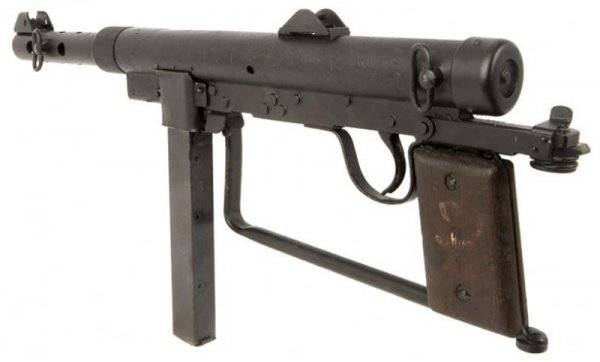
The back of the weapon. Photo Armoury-online.ru
"Port Said" was equipped with a rifled barrel caliber 9 mm long 212 mm (relative length - 23,5 caliber). The barrel was fixed on the front end of the receiver with a simple screw cap. For better cooling and for greater safety, the arrow was completed with a tubular protective casing. At the top, bottom and on the sides of the casing there were three large holes for the supply of atmospheric air, cooling the barrel.
Like many machine pistols of the time, Carl Gustaf / Port Said received the simplest receiver in the form of a metal tube of sufficient length. In its front part there was a thread for mounting the barrel, behind the chamber in the upper right there was a window for ejection of spent cartridges. On the right wall of the box there was a slot for the cocking handle, which occupied about half of its length. On top of the slot, a small L-shaped groove departed, which served as a fuse. The rear end of the receiver was closed with a cap mounted on the thread.
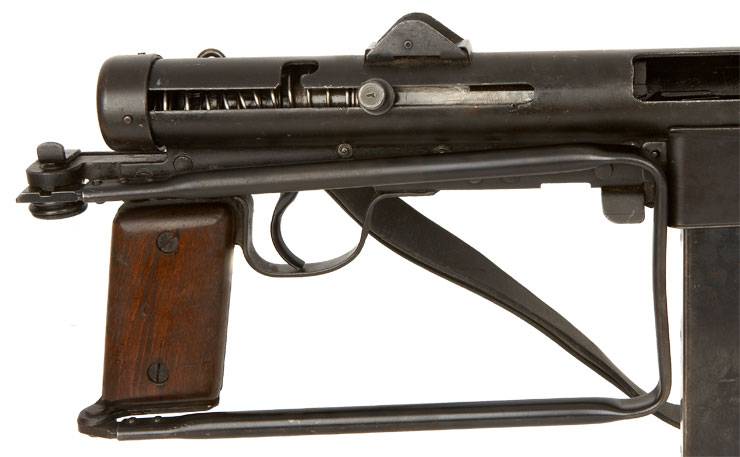
Receiver and controls. Visible is the L-shaped groove, which serves as a fuse. Photo Deactivated-guns.co.uk
From below, a low, narrow rectangular casing was attached to the tube, which was connected to the store's receiver and accommodated the details of the trigger mechanism. In addition, a pistol grip and a folding butt joined this casing.
The Swedish project used the simplest automatics built on the basis of a free gate. The bolt was a massive cylindrical piece, moving along the receiver. Inside the cup there was a fixed drummer, an extractor was placed next to it. On the back of the bolt, a hole was provided for mounting the cocking handle. The entire cavity of the receiver, located behind the gate, was given under the return-combat spring of sufficient power.
"Port Said" got the simplest trigger mechanism, allowing to shoot only in bursts. In its composition there were only the trigger, the sear, the spring and some other parts, including the axles and pins for fastening. One of the modifications of the base Kulsprutepistol m / 45 had a better USM with the possibility of firing single and queues, but Egyptian weapons were proposed to be assembled by an older project. The submachine gun also did not have a safety device built into the trigger mechanism. The blocking of the weapon was carried out by withdrawing the bolt to the rear position with its subsequent rotation and setting the cocking handle into the L-shaped groove.
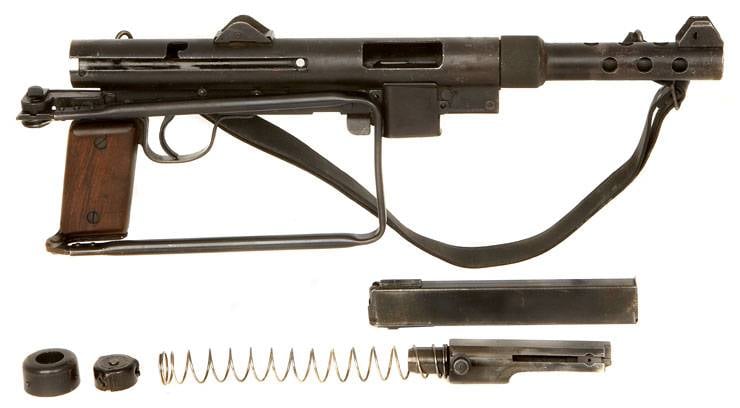
Incomplete disassembly Port Said. Under the arms of the store and the shutter with a reciprocating-combat spring. Photo Deactivated-guns.co.uk
The ammunition system was based on detachable box stores with a double row of 36 cartridges. The store was placed in a low receiving shaft under the receiver. Its fixation was carried out using a latch located behind the receiver.
Licensed submachine gun had not the most complex sights, match the tasks performed. Over the muzzle of the barrel, on top of the protective casing, there was an unregulated front sight with a U-shaped protection. Above the central part of the tubular receiver was placed the rear panel with a similar protection. He had the shape of the letter "L" and could change his position for shooting at 100 and 200 m.

Marking on weapons. Photo Deactivated-guns.co.uk
Submachine gun "Port Said" did not differ much convenience, but still had acceptable ergonomics. Under the rear of the casing USM fastened pistol grip fire, made of metal and equipped with wooden lining. In front of it was a trigger guard. The rear casing element protruded prominently beyond the tubular box and handle; it had a loop for swiveling the frame butt. The second mount was located at the bottom rear of the handle.
The frame butt of the weapon was a U-shaped part made of a metal tube of small diameter. The longitudinal elements of the butt kept the original diameter, while their ends, which were mounted on the arms, and the shoulder rest were made flat. On the upper element of the butt was put on a rubber tube that served as cheek. Butt was formed by turning right and forward. When folded, the shoulder rest was to the right of the store, slightly behind it.
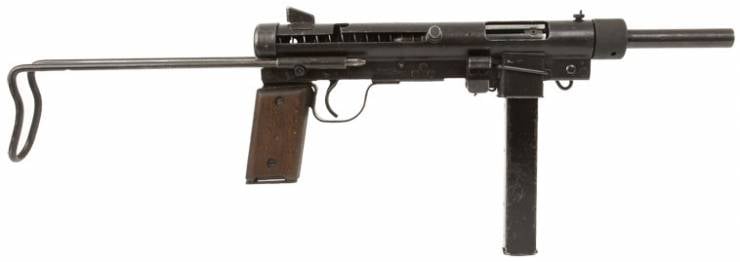
Aqaba is a simplified version of Port Said. Photo Deactivated-guns.co.uk
Carry weapons should be using a belt mounted on a pair of swivels. The front was on the left side of the barrel casing and secured in the center hole. The second was placed in the back of the receiver.
The total length of the Port Said with the butt unfolded was 808 mm. When folded, this parameter was reduced to 550 mm. Mass of weapons without a magazine - 3,35 kg. Automatics let you shoot at a pace of up to 600 shots per minute. The barrel of medium length accelerates the bullet to 425 m / s. The effective range of fire reached 150-200 m. The weapon was easy to manufacture and use, so it could be produced in large quantities and quickly mastered by the troops.
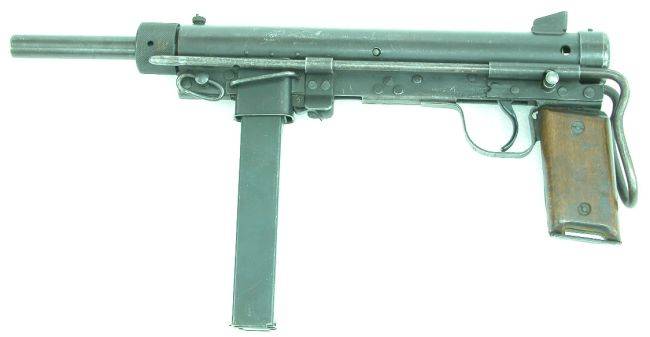
Arms in the folded state. Photo Modernfirearms.net
Serial production of the Port Said submachine guns was launched by the mid-fifties, and in just a few years the supply of such weapons made it possible to significantly upgrade the material part of the troops. Egyptian-made products replaced older weapons supplied by Britain and the United States. For many years, Port Said has become the main weapon of its class in the armed forces of Egypt.
However, the serial "Port Said" did not fully suit the military. A few years after its appearance, an order appeared to create a simplified modification. In the sixties, a new sample was put in the series called “Aqaba”. The submachine gun, probably named after one of the bays of the Red Sea, had noticeable differences from the base model, and besides, it differed in weight and in some parameters of an operational nature.
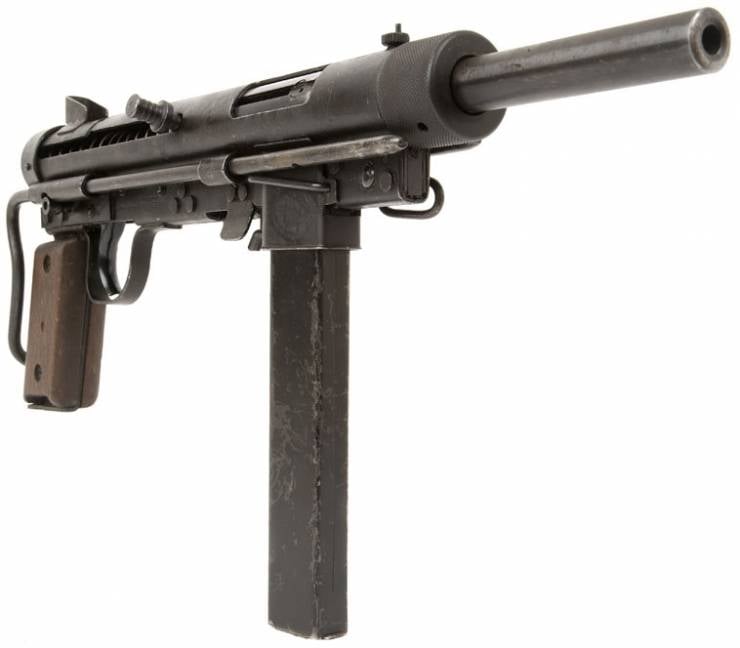
Folded arms from a different angle. Photo Deactivated-guns.co.uk
The product "Aqaba" has lost the protective casing of the barrel. In this regard, the front sight was transferred to the front of the receiver. Her defense has been removed. Frame butt replaced retractable, made of thick wire. The longitudinal elements of such a butt moved along the receiver in four tubular guides mounted on the sides of the casing trigger. U-shaped shoulder support with folded butt was behind the handle. Under the rear tubes there was a spring-loaded button that fixed the butt in one of two positions.
Despite all the changes, the Akaba submachine gun hardly differed from the Port Said in its dimensions, but was a little lighter. Technical and combat characteristics also have not changed. Serial weapons of simplified design quickly replaced the products of the basic modification in mass production. A parallel release of two samples was not planned.
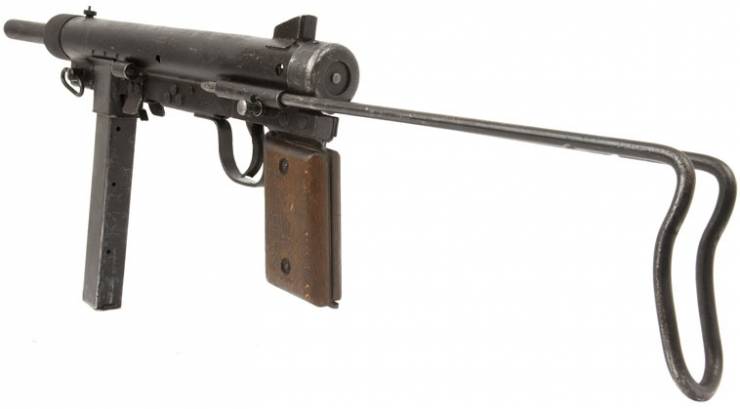
View of the back. You can see the improvements associated with the use of a new stock. Photo Deactivated-guns.co.uk
Serial production of submachine guns and "Akaba", according to various sources, lasted until the middle or until the end of the seventies. During this time, the army received several tens of thousands of products of two models. Mass deliveries of licensed weapons in the original and modified versions allowed, over time, to abandon weapons previously transferred by friendly countries. At the same time, the presence of only two submachine guns with the highest possible unification significantly simplified the mass exploitation of weapons.
Since the middle of the last century, the situation in the Middle East is not calm. A number of countries treated each other at least unfriendly, which from time to time led to the onset of open conflicts. All clashes and wars in the region have led to the use of existing weapons, including licensed submachine guns.
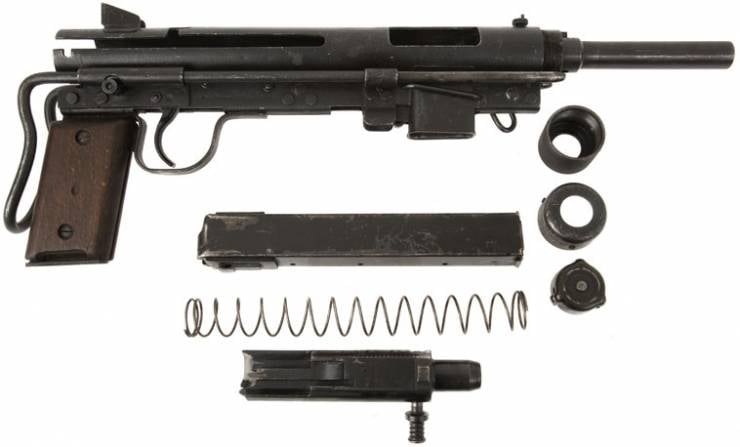
incomplete disassembly of "Aqaba". Photo Deactivated-guns.co.uk
According to known data, the first conflict with the use of Port Said was the Suez War. Subsequently there were the Six Day War, the War of attrition and other full-scale conflicts. In each of them, the Egyptian troops used the existing small arms, including submachine guns of Swedish design. For obvious reasons, these weapons did not show any special advantages over their counterparts, and also gave way to more powerful systems. However, it also helped the Egyptian soldiers to make a significant contribution to defending the interests of their country.
The basic submachine gun Carl Gustaf m / 45 was developed in the mid-forties and was based on the ideas of its time. Over time, it is morally obsolete and has ceased to meet current requirements. In the eighties, the Egyptian army and security forces began a new rearmament, during which most of the Port Said and Akaba submachine guns were replaced. As a replacement, both samples of the same class and automata were used, depending on the specifics of the re-equipped unit.
By now, most of the Swedish-made Egyptian weapons have been decommissioned and replaced with other weapons. However, as far as is known, a certain number of Port Saidov and Akab still remain in the arsenals of individual units. It can be assumed that the resource of such weapons is nearing its end, which is why it will soon have to be written off. On this story The first Egyptian submachine gun will end.
Speaking about the machine gun "Port Said", it is necessary to mention the improvised weapon, to a certain extent based on its design. At the beginning of the last decade, Carlo submachine guns appeared in the armament of various Arab formations in the Middle East, which were produced in artisanal workshops by various workshops. Such weapons, having noticeable differences of a constructive and technological nature, are generally based on the construction of the Swedish "Karl Gustav". The same is due to the name "Carlo".
Without having its own design school, Egypt was forced to acquire a license to manufacture weapons of someone else’s design. The result was the appearance of two curious submachine guns and the rearmament of the army. From a technical point of view, Port Said and Aqaba products can hardly be considered perfect, but the successful solution of the task in the form of re-equipment of the troops makes it possible to call them successful. However, this success was the first and the last. After the cessation of the production of "Aqaba", Egypt no longer produced submachine guns, preferring to purchase finished products from foreign countries.
On the materials of the sites:
http://modernfirearms.net/
https://militaryfactory.com/
http://deactivated-guns.co.uk/
http://armoury-online.ru/
http://forum.valka.cz/
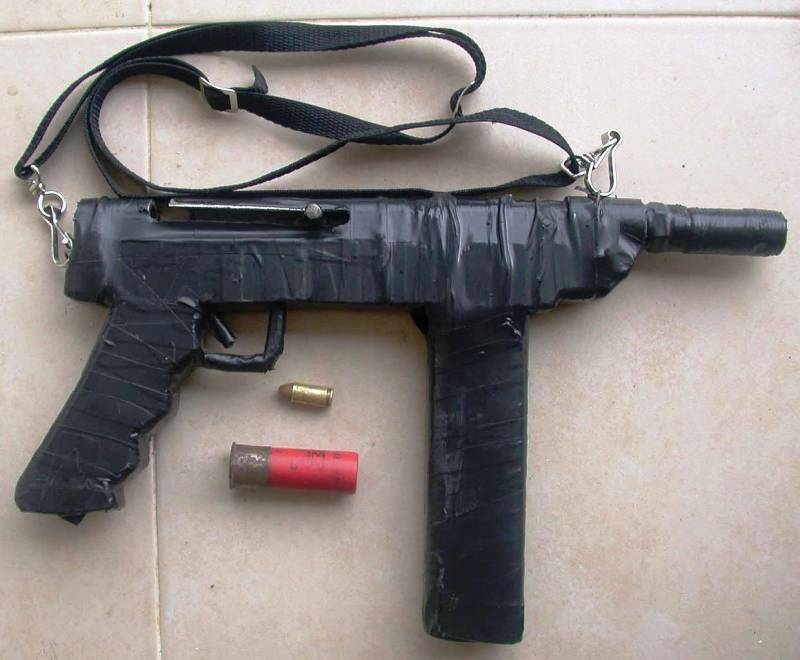
Information